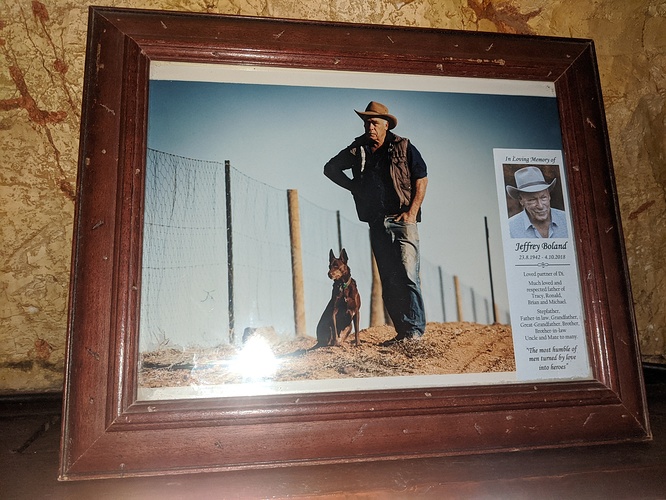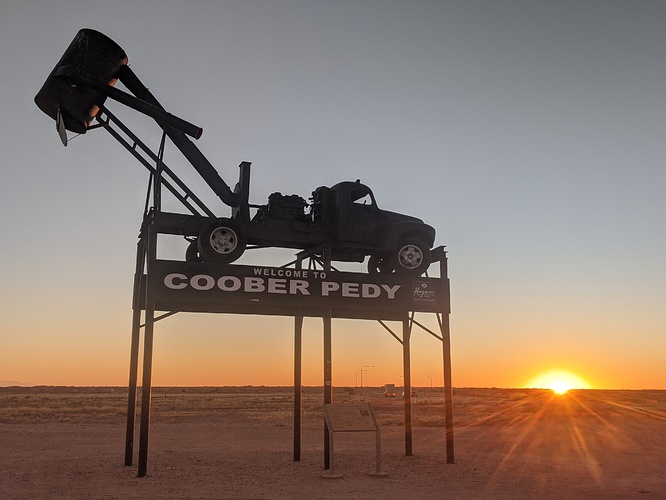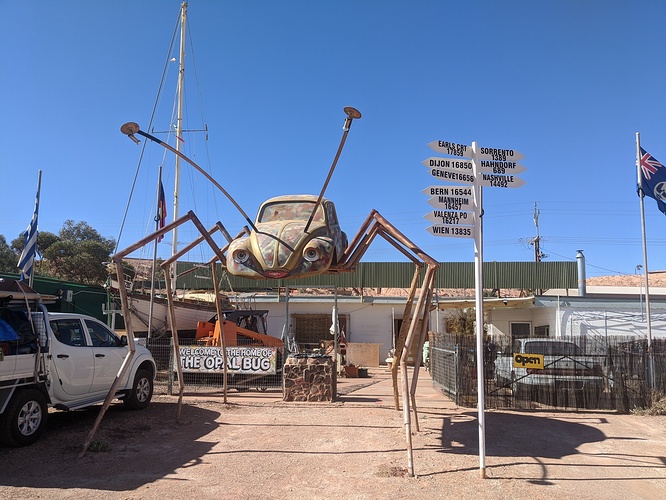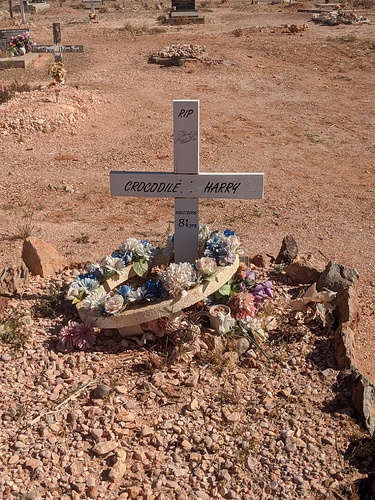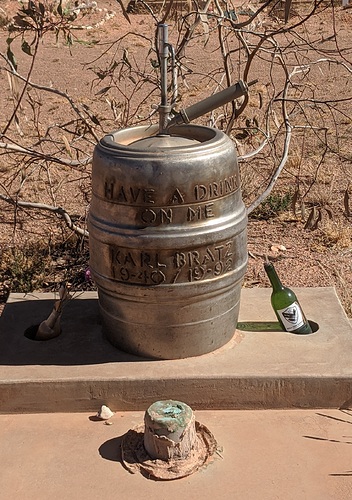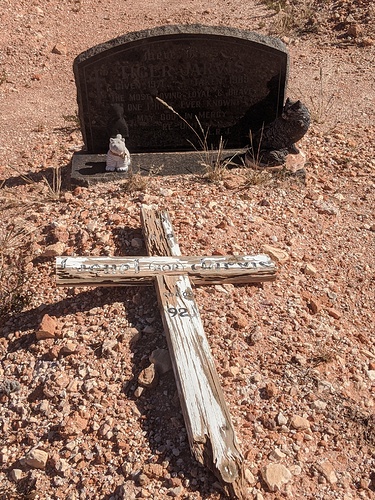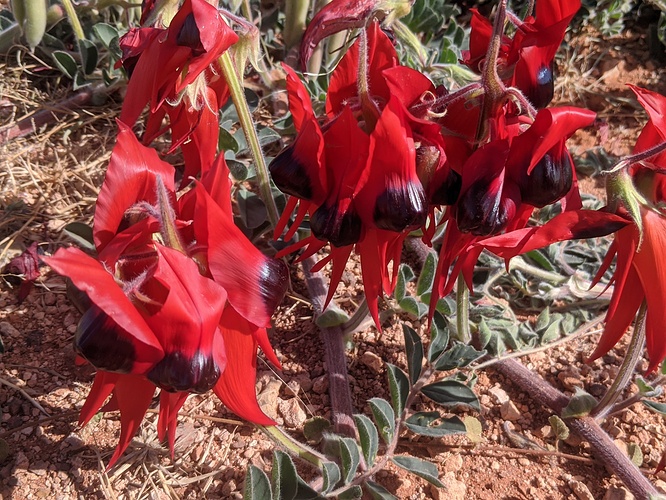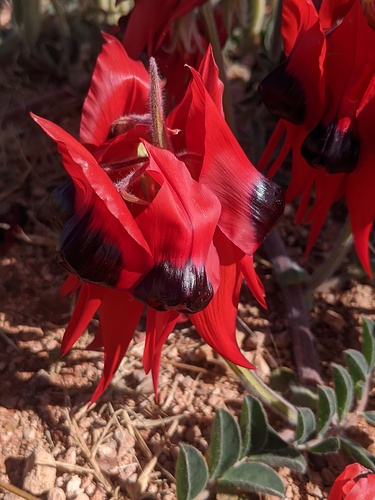PART 2
I guess I should mention how to pronounce Coober Pedy. It’s COO-ba PEE-dee.
Also, the etymology is kind of interesting. It’s not entirely clear, but very likely it comes from kupa piti in the Aboriginal Kukata language. Kupa means a boy who has not gone through initiation rites into manhood; however since this was also true of white settlers, white men were also referred to as kupa. Piti means hole or quarry. The intended meaning is “whitefella hole”, in reference to the mines. The name was voted on by local pioneers (beating out the second choice of “Opal Ridge”) and contemporaneous documents indicate they asked Aborigines how they referred to the site. (As they were ignorant of the details of Aboriginal societies, the Kukata language is not the language of the people whom Aboriginal people consider the traditional custodians of the area).
Before I get into day 2, I realised I forgot to mention that I have been to Coober Pedy once before. I was something like five years old, back in 1985 or so. My dad used to work up in the remote north periodically, conducting seismic surveys, where you set explosives and measure the shock waves to map the underground geology and see if there’s oil or anything. My mother, sister and I drove up with a woman my dad worked with to meet my dad, who was already there. On the way up we stopped on the side of the road for a bathroom break, out in the desert. The other woman was driving and I was sitting in the front. When my sister and I got back in, this woman just took off - leaving my mother in the middle of the desert! A few minutes down the road I was timidly like “what about my mum” and this woman looked around the car wildly, swore, and swung the car back around to collect her. All I remember about the trip is that, the barest flash of a memory of being in an underground hotel, and the flight back to Adelaide, as it was my first ever time in a plane.
So anyway, Day 2 we headed out to grab some photos, like I obviously had to get one of the Opal Bug:
We also headed up a hill in the middle of town to get some PANORAMIC VIEWS of the magnificence of the town. About 80% of the town live underground and most of them are out in the burbs a little bit, so much of the town is invisible. That street where some cars are parked kind of halfway back in the middle of the first pic is the main street (and that big white building is the only grocery store, which turned out to be comprehensively stocked, kind of astonishingly so). The other pic looks out in a different direction towards some of the hills into which dugouts are built.
We’d just about run out of things to do at this point, but headed out to look around one of the town cemeteries as there are some interesting gravestones there. Firstly and most obviously:
RIP to a real one. Also, a real Strayan clearly buried here:
Lastly, there was this:
So you don’t have to squint, I’ll transcribe the headstone caption:
Here lies TIGER JARVIS. Given 1971, taken 1989. The most loving, loyal and brave one I have ever known. May God in mercy reunite. L.R.J.
The statue on the right of the grave is the Tiger Jarvis in question. He was Lionel Jarvis’s cat, whom Lionel buried here. When Lionel himself died in 2009, 20 years after Tiger, at the age of 92, he joined his cat in this grave. The stone headstone is for the cat, the tattered wooden cross is for Lionel. Quite moving, honestly.
After digging around some opal shops, we were done. It’s a small town. We could have toured a modern day working opal mine, but meh. I think one day would be enough to see the town, but I was happy to have two days in between having to do the drive to Adelaide again.
All that was left was spotting a flash of red on the side of the road a couple hundred km south of Coober Pedy and pulling over for a look. It was a patch of Sturt Desert Pea, the state flower of South Australia, which only grows out here in the far north of the state. I’ve seen them a handful of times in my life.
I might never go back, but I’m glad I checked it out. The outback and the mythology of it are touchstones to the soul of the country in an Australia where almost everyone now lives in large cities. It’s good to get out there sometimes and reacquaint oneself with the vastness and hostility of the continent, and how tough life was for pioneers.
